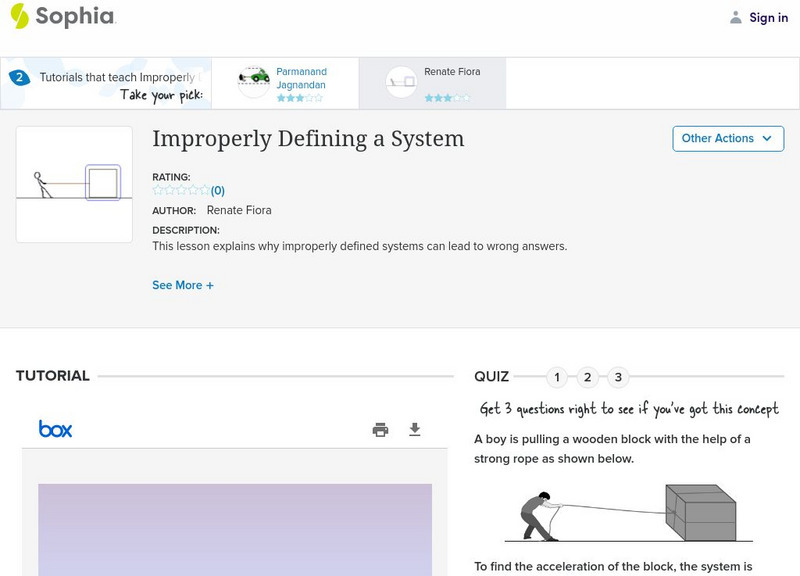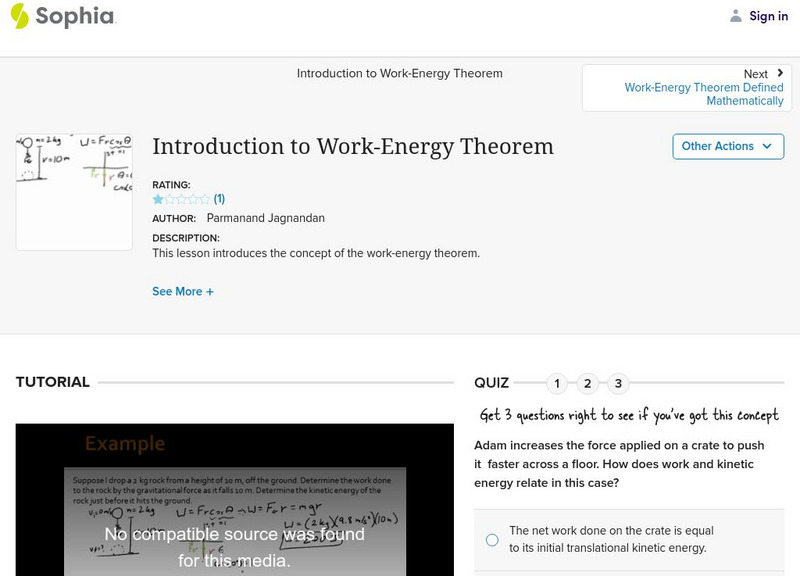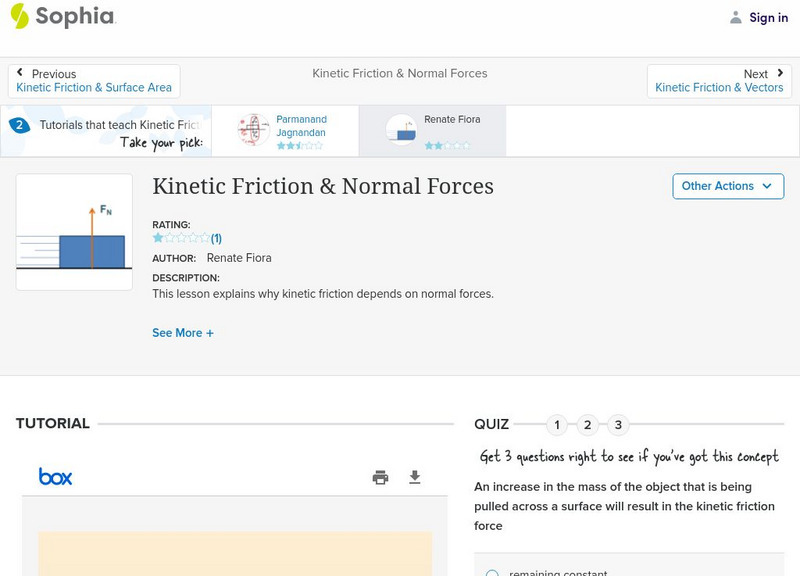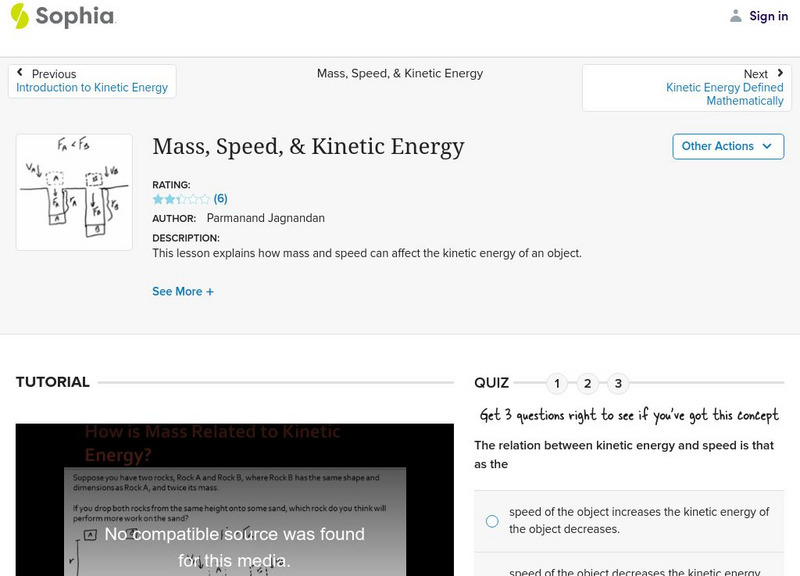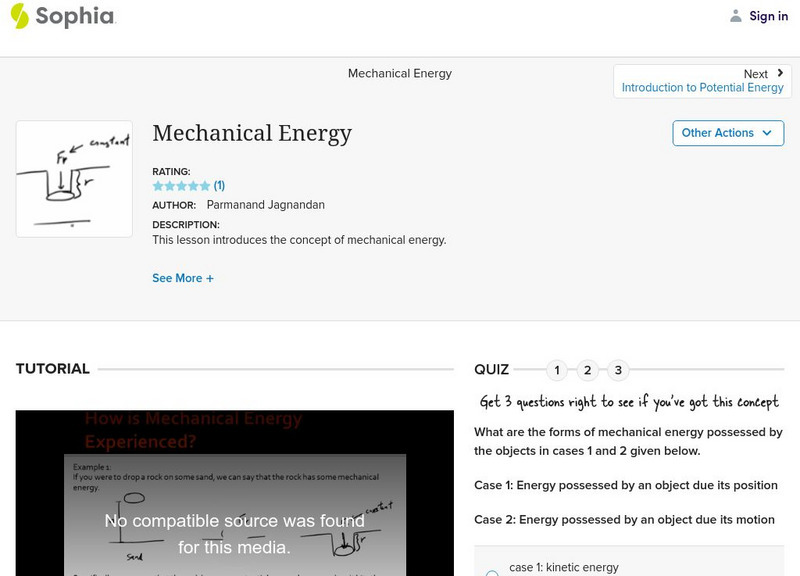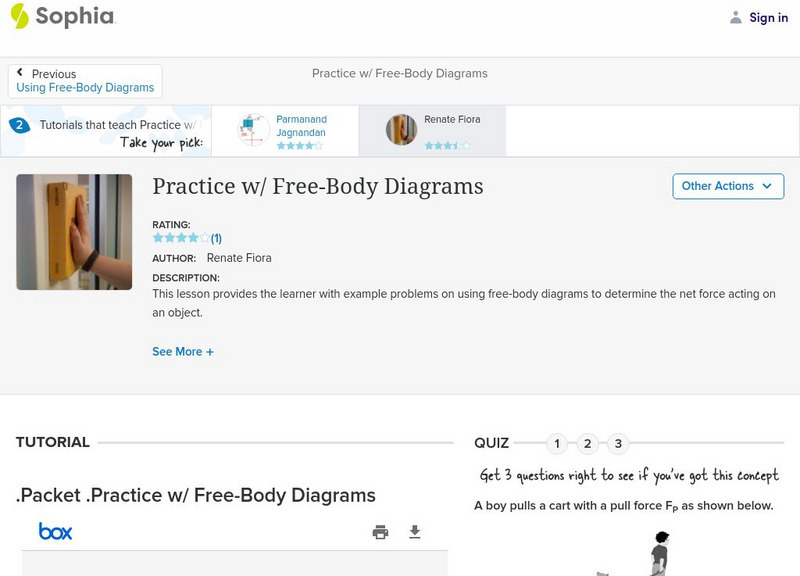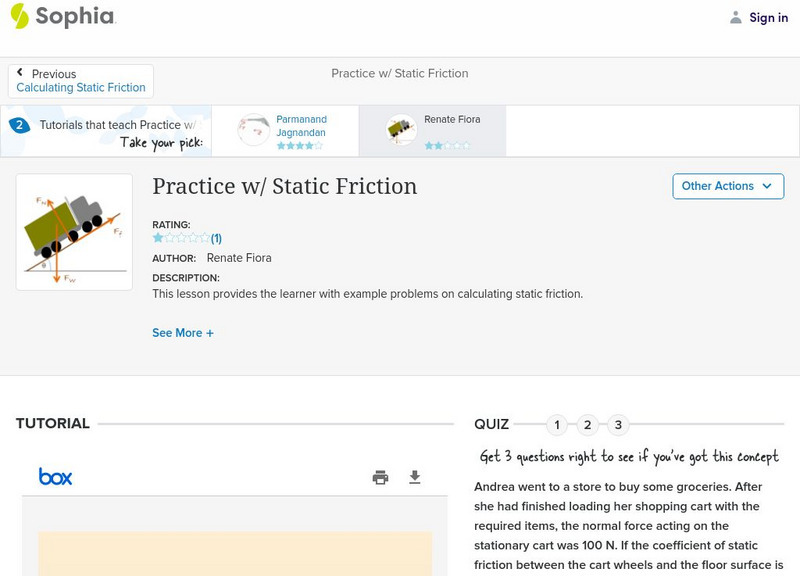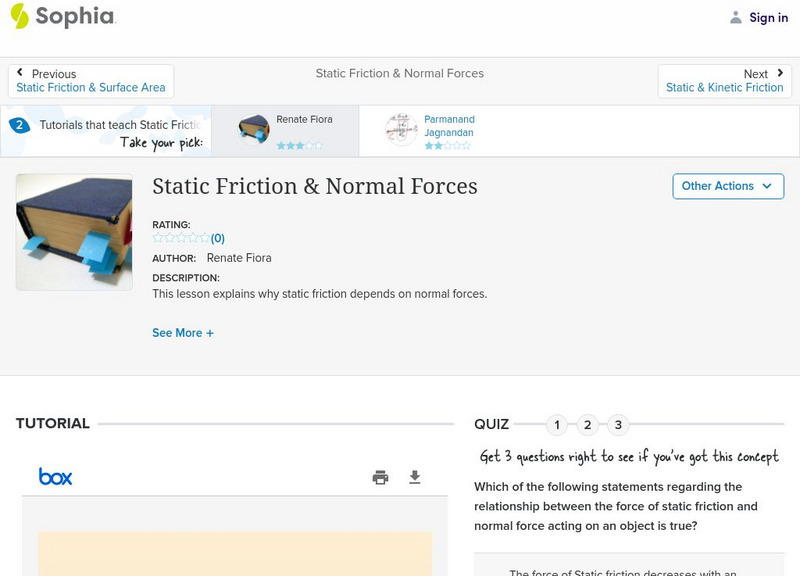TeachEngineering
Teach Engineering: Motion Commotion
Students learn why and how motion occurs and what governs changes in motion, as described by Newton's three laws of motion. They gain hands-on experience with the concepts of forces, changes in motion, and action and reaction. In an...
TeachEngineering
Teach Engineering: Swinging on a String
Students explore how pendulums work and why they are useful in everyday applications. In a hands-on activity, they experiment with string length, pendulum weight and angle of release. In an associated literacy activity, students explore...
TeachEngineering
Teach Engineering: The Advantage of Machines
In this lesson, students learn about work as defined by physical science and see that work is made easier through the use of simple machines. Already encountering simple machines everyday, students will be alerted to their widespread...
CK-12 Foundation
Ck 12: Plix: Motion: Determining Net Force
[Free Registration/Login Required] Shown are three different systems with two forces acting upon it and a red vector showing the net force acting upon the system. Move the red dots to accurately reflect the net force experienced by each...
CK-12 Foundation
Ck 12: Plix Series: Average Acceleration
[Free Registration/Login Required] Build the appropriate graph curve to illustrate an acceleration problem. After the activity, answer a challenge question to check for understanding.
CK-12 Foundation
Ck 12: Plix Series: Friction
[Free Registration/Login Required] Use given friction formulas and an interactive diagram for an inclined plane to solve a motion problem. After the activity, answer a challenge question to check for understanding.
CK-12 Foundation
Ck 12: Physical Science: Calculating Work
[Free Registration/Login may be required to access all resource tools.] How to calculate work from force and distance and vice versa, and the SI unit for work.
CK-12 Foundation
Ck 12: Physical Science: Newton's Third Law
[Free Registration/Login may be required to access all resource tools.] Newton's Third Law of Motion - action and reaction forces and why they are not balanced forces.
Physics Classroom
The Physics Classroom: Kinetic Energy
Kinetic energy is defined and explained--learning exercises are included to assess your understanding.
Sophia Learning
Sophia: Dipole Dipole Forces
A brief tutorial which defines a dipole-dipole force, and explains how to identify which molecules exhibit dipole-dipole forces.
Sophia Learning
Sophia: Expanding the Work Energy Theorem
A narrated tutorial which illustrates how the work-energy theorem can be expanded to include other kinds of energy. [10:07]
Sophia Learning
Sophia: Improperly Defining a System
This presentation explains why a poorly defined system can lead to incorrect answers in physics problems.
Sophia Learning
Sophia: Introduction to Work Energy Theorem
Watch this screencast to understand the work-energy theorem in regards to energy. [8:45]
Sophia Learning
Sophia: Kinetic Friction & Normal Forces
This slide show presentation helps the learner understand how normal force affects the amount of friction.
Sophia Learning
Sophia: Mass, Speed, & Kinetic Energy
Looking to review how kinetic energy is related to mass and speed? This video lesson review the concept of kinetic energy, mass, and speed with both definitions and problems. Problems are work through step-by-step so you can review how...
Sophia Learning
Sophia: Mechanical Energy
Understand when objects have mechanical energy with this video lesson. Also learn the difference between potential and kinetic energy. The video also discusses the factors that influence both potential and kinetic energy using examples....
Sophia Learning
Sophia: Practice With Free Body Diagrams
Need some practice drawing free-body diagrams? This slideshow lesson gives several examples of different situations and the forces that need to be shown in the free-body diagram.
Sophia Learning
Sophia: Practice With Static Friction
With this tutorial, learn how to calculate static friction problems in physics.
Sophia Learning
Sophia: Properly Defining a System
This slide show illustrates how to properly define a system of forces.
Sophia Learning
Sophia: Static Friction & Normal Forces
A quick presentation reviewing why static friction depends on normal forces.
Sophia Learning
Sophia: System of Particles in an Object
This presentation explains why an object remains at rest, despite the fact that the particles within the object are in motion.
Sophia Learning
Sophia: Work: Lesson 2
This lesson will explain the concept of work, and show that it can be calculated using force and distance.
Other
Rusty Iron Workshop: Antique Stationary Engines
This site has great descriptions and pictures of antique machines. Discussions of their horsepower, fuel and uses are all included.
Math Is Fun
Math Is Fun: Weight or Mass?
Students learn the difference between weight and mass. Practice problems are included to check for comprehension of the concept.













